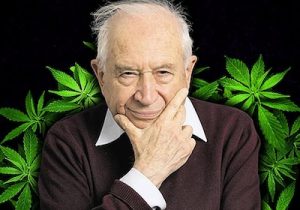
CANNABINOID THERAPEUTICS – Quick Facts from Raphael Mechoulam, MD
- Cannabis has been used by humans for approximately 4000 years, the first documented case of cannabis being used for pain is in China 3000 years ago.
- Cannabis is an herb, it is an adaptogen and changes with the environment and to the people and their needs as they use it.
- Cannabis was in the pharmacopeia until the 1940’s.
- There are no associated deaths in persons using cannabis.
- Cannabis supplements directly the endocannabinoid system found in all mammals.
- THC is the result of heating THCA. THCA in its acid form is found in cannabis and is non-psychoactive. When heated the carboxyl molecule is released and THCA changes to THC, the only psychoactive property of the plant.
- THC amounts are manipulated in different strains of cannabis and so the cerebral effect can be altered to simply promote a feeling of relaxation.
- CBD is the other most notable and healing portion of the cannabis plant. CBD has no psychoactive effects. It can be combined with THC and is in many hybrids thus decreasing the overall effects of THC.
- THC was discovered in 1964 by Dr. Raphael Mechoulam and the Endocannabinoid System in humans in 1997 by his team. He was a contender for the Nobel Prize in Medicine in 2016 for his work in Cannabis.
- The NIH has maintained a copyright on Cannabis for many years. Patent #
- It has been known since about 1975 that THC kills cancer cells. The National Cancer Institute published a PDF in 2017.
- The endocannabinoid system found in all mammals. We make our own cannabinoids. The quickest way to replace a deficiency in the endocannabinoid system is to ingest it, and vaping or smoking is the quickest way to introduce cannabinoids into the body.
- The human Endocannabinoid System is the largest mother modulator in the body. It is restorative, replenishes and relaxes the body and other systems. Its major function is to restore homeostasis (balance) within systems. The two main receptors are CB1 they are in organs, and CB2 which is in the immune systems. When there is a deficiency of these receptors endogenous cannabinoids replace the deficits. This is how cannabis works for many, many symptoms. It is called down regulation and retrograde filling of the cannabinoid receptors in a deficient state. This very action is the reason why people with many different illnesses respond to cannabis.
- Unlike opioids, there are no deaths associated with cannabis because there are few to no receptors in the brainstem (where respiratory drive originates). Opioids inhibit the respiratory drive.
- Cannabis has a lung protectant effect. Persons who smoke cigarettes and cannabis have a lower cancer rate than persons who only smoke.
- Cannabis can be used in synergy with opioids, meaning that people can use less opioids with the addition of cannabis and so it is considered an exit drug by many healthcare professionals.
- Cannabis was legal until prohibition against liquor ended. Liquor sales did not rebound as expected and there was concern that cannabis competed with liquor. A successful campaign against cannabis so that liquor sales would increase ensued with great success. In the 1960s cannabis got caught up in Nixon’s drug campaign and was erroneously placed in Schedule I.
- Cannabis has long been used to boost appetite and decrease vomiting from chemotherapy.
- Cannabis CBD is often used for seizures.
- The Entourage Effect is that cannabis as a whole, is better than its individual parts.
Source; Mecoulam, Raphael, MD
